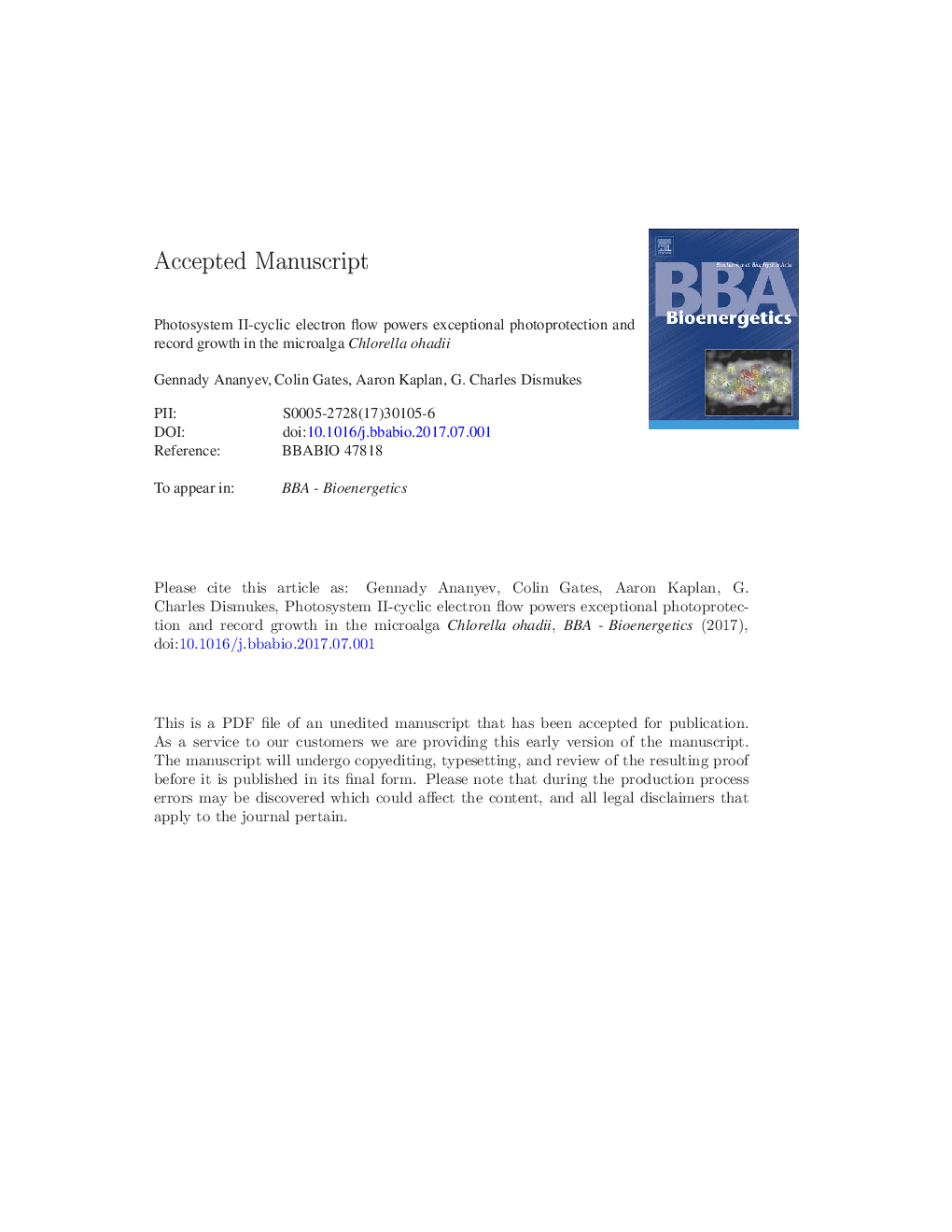| Article ID | Journal | Published Year | Pages | File Type |
|---|---|---|---|---|
| 5507151 | Biochimica et Biophysica Acta (BBA) - Bioenergetics | 2017 | 36 Pages |
Abstract
The desert microalga Chlorella ohadii was reported to grow at extreme light intensities with minimal photoinhibition, tolerate frequent de/re-hydrations, yet minimally employs antenna-based non-photochemical quenching for photoprotection. Here we investigate the molecular mechanisms by measuring Photosystem II charge separation yield (chlorophyll variable fluorescence, Fv/Fm) and flash-induced O2 yield to measure the contributions from both linear (PSII-LEF) and cyclic (PSII-CEF) electron flow within PSII. Cells grow increasingly faster at higher light intensities (μE/m2/s) from low (20) to high (200) to extreme (2000) by escalating photoprotection via shifting from PSII-LEF to PSII-CEF. This shifts PSII charge separation from plastoquinone reduction (PSII-LEF) to plastoquinol oxidation (PSII-CEF), here postulated to enable proton gradient and ATP generation that powers photoprotection. Low light-grown cells have unusually small antennae (332 Chl/PSII), use mainly PSII-LEF (95%) and convert 40% of PSII charge separations into O2 (a high O2 quantum yield of 0.06 mol/mol PSII/flash). High light-grown cells have smaller antenna and lower PSII-LEF (63%). Extreme light-grown cells have only 42 Chl/PSII (no LHCII antenna), minimal PSII-LEF (10%), and grow faster than any known phototroph (doubling time 1.3 h). Adding a synthetic quinone in excess to supplement the PQ pool fully uncouples PSII-CEF from its natural regulation and produces maximum PSII-LEF. Upon dark adaptation PSII-LEF rapidly reverts to PSII-CEF, a transient protection mechanism to conserve water and minimize the cost of antenna biosynthesis. The capacity of the electron acceptor pool (plastoquinone pool), and the characteristic times for exchange of (PQH2)B with PQpool and reoxidation of (PQH2)pool were determined.
Keywords
2,5-dimethyl-p-benzoquinoneDMBQSTFDouble HITWOCDCMUNPQPSIIChlCEFEHL3-(3,4-Dichlorophenyl)-1,1-dimethylureapara-BenzoquinoneQA and QBMISSCyclic electron transferWater oxidationoxygen evolutionLinear electron flowCyclic electron flowNon-photochemical quenchingChlorophyllQuality factorQuantum yieldDeactivationPhotosystem IISingle turnover flashLefwater oxidizing complexplastoquinonePhotosynthetic efficiency
Related Topics
Life Sciences
Agricultural and Biological Sciences
Plant Science
Authors
Gennady Ananyev, Colin Gates, Aaron Kaplan, G. Charles Dismukes,
